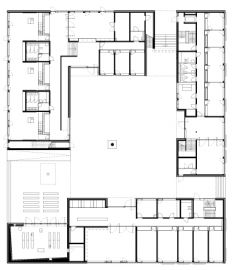Dominikuszentrum Sub-centre with a diocesan youth centre and a Caritas centre
The Dominikuszentrum constitutes a cultural and spiritual centre in the newly developed district near Münchener Nordheide. It is a fitting counterpart to the urban square, which is within eyeshot.
Situated in an architectonic sculpture cut out of brick, the chapel and the social and cultural amenities are grouped around a central contemplative courtyard. Various passageways invite people to enter or to walk down them. The main passageway facing the square also forms the sheath enclosing the extended chapel. The community and youth centre with its large parish hall and various group rooms is connected to the chapel. To the left of the main passageway is the Kindergarten, which caters for three groups and contains play areas.
The first floor accommodates the youth centre for the deanery of Feldmoching and Freimann. The rooms face out onto two large roof terraces, providing young people with a leisure area shielded from noise and onlookers. Opposite it is section of the Caritas building with its multipurpose rooms, offices and administration. All amenities and facilities are accessed from the common courtyard, where the tree (trumpet tree) survived.
A very high-grade red brick, fired in a peat kiln, gives the centre its characteristic appearance. With its size and its manual-haptic quality, it stands for human scale and timeless building culture, and calls to mind the primary building material: earth. Very irregular stones were chosen with great care to give the façade a lively, sculptural quality.
The brick was employed to emphasise the idea of a body cut out of a brick mass. 300 bronze crosses have been immured in the external walls of the chapel. Their arrangement in groups of three symbolises the holy trinity.
The proportions of the chapel are derived from the golden section, both in ground plan and elevation. The room appears rectangular only at first sight, for the two outside walls have been turned slightly on their axis; the dynamics of the space created point to Mary, to the place of private prayer.
A large clerestory window allows daylight to penetrate written excerpts from the creed, permeating the room with meaning.
The undercoat for the light is blue. It creates the interior architectural sheath of the chapel, filling the room with spiritual content and augmenting the unique atmosphere created by the light.
The blue room is the symbol of the heavenly and the divine. It is also the colour of Mary. Based on the conceptual design of meck architekten the rooms brick sheathing has been coloured blue in keeping.
The liturgical concept envisages the altar and the ambo being placed opposite one another. The centre of the room, reserved for the divine, remains empty. This concept very powerfully expresses the communio idea. By stressing the centre, it emphasises the idea of the communal.
The five large bronze-clad gates can be opened to extend the chapel outwardly: the envisaged arrangement of the ambo and the pews turns the chapel into a presbytery and the covered exterior area into a nave.

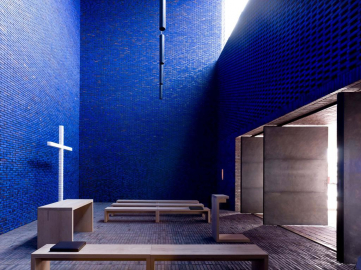
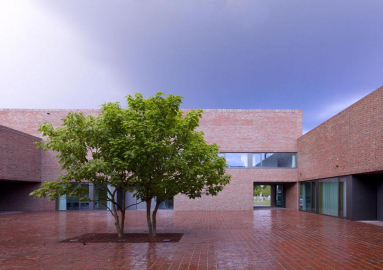
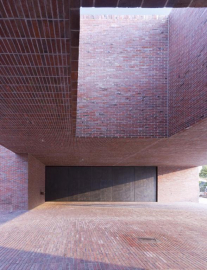
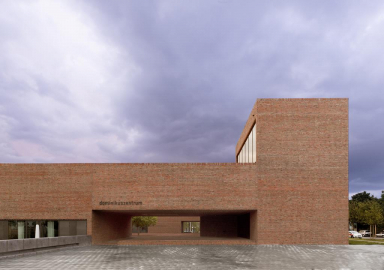
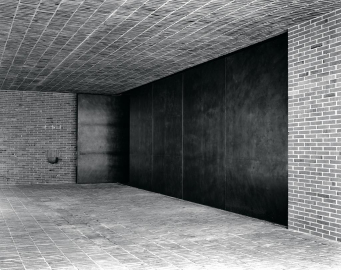
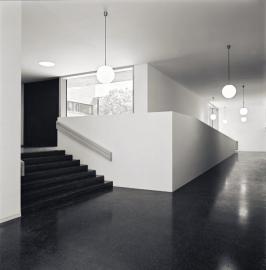
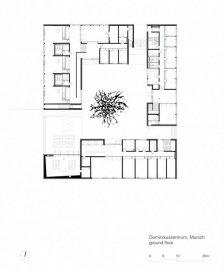
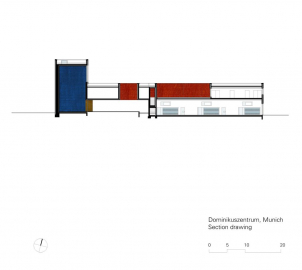
.jpg)
.jpg)
